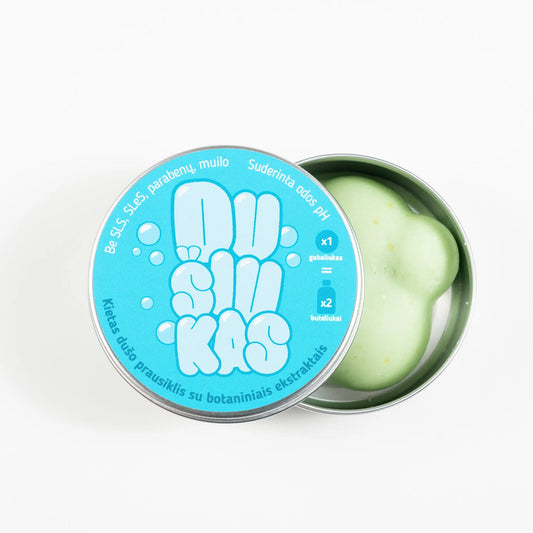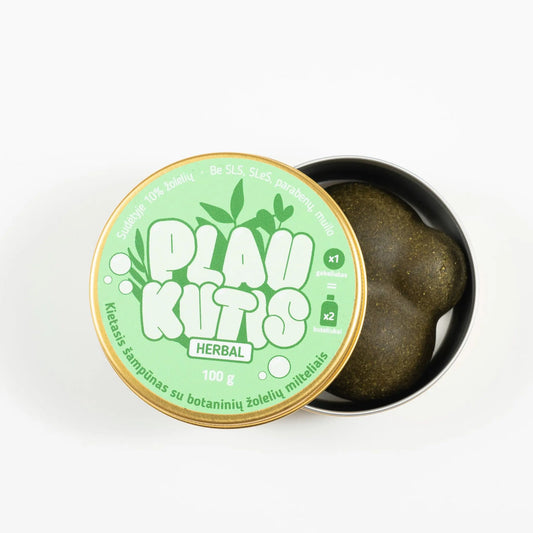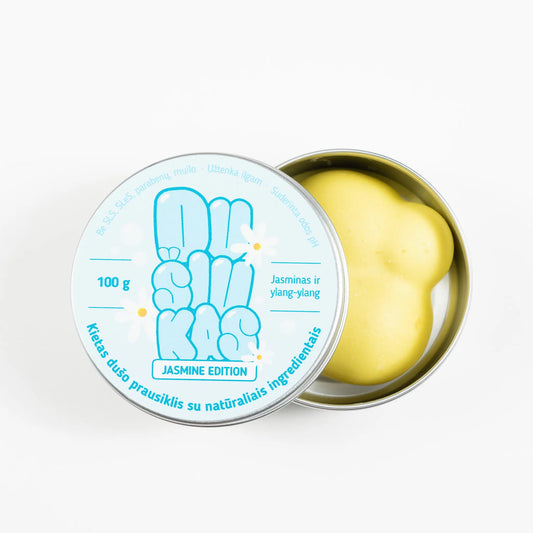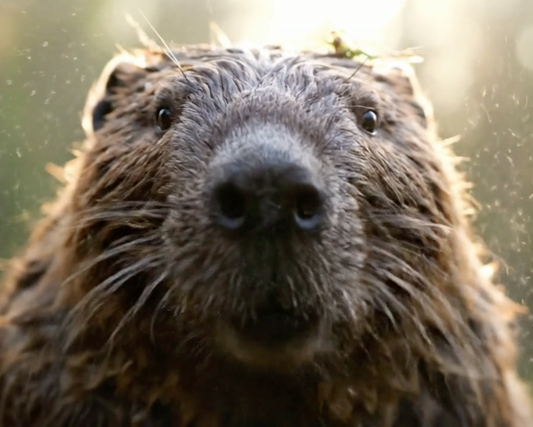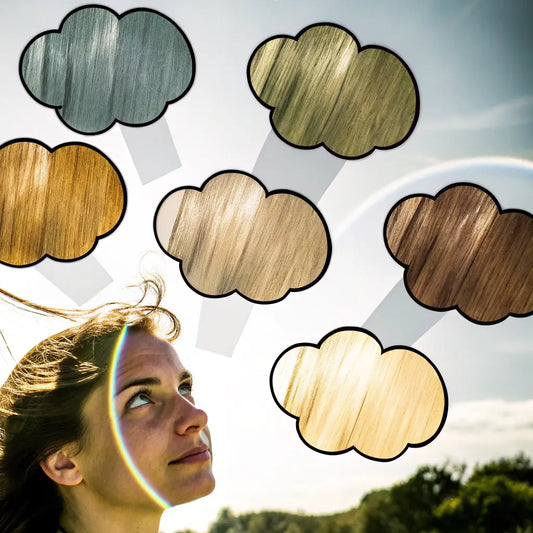Why does your hair behave the way it does? Whether it's straight, wavy, curly, or coily, the answer lies largely in your DNA. While external factors like heat styling or environmental conditions can influence the appearance of your hair, genes play a major role in determining the fundamental characteristics of your hair—from texture and density to growth rate.
Understanding the genetic determinants of your hair type can help you personalize your hair care routine and protect your hair by choosing products and methods that best suit your hair based on its genetic code. This article explores how your DNA, epigenetics, and genetic mutations shape your hair type, providing interesting facts and insights into the role science plays in your hair.
The role of DNA in determining hair texture
Hair follicle structure
The shape of the hair follicle is one of the main factors that determines the texture of your hair. Hair follicles are small, tube-shaped structures in the skin from which hair grows. The shape of the follicle determines whether your hair will be straight, wavy, curly, or coily.
- Round follicles produce straight hair . Because the hair shaft grows evenly from a round follicle, the strands are smooth and uniform.
- Oval follicles produce wavy hair . This slight asymmetry in the follicle causes hair to grow in gentle waves.
- Elliptical or flat follicles produce curly or spiral hair . Such follicles cause hair to grow at sharp angles, creating curls or dense spirals.
Interestingly, the shape of the follicle can also affect hair thickness. A 2015 study in the International Journal of Trichology found that people with elliptical follicles tend to have thicker hair, because the flatter hair shaft takes up more surface area. The study also found that people with spiral hair can experience 75% more shrinkage after washing, meaning their hair looks significantly shorter when it’s dry than when it’s wet.
Inheritance patterns and hair characteristics
Hair texture, color, and thickness are inherited traits that are passed down through genes. Each of these traits is determined by dominant and recessive genes. For example, curly hair is usually controlled by a dominant gene, while straight hair is usually linked to recessive genes. If both parents have dominant genes for curly hair, their children are likely to inherit curly hair. However, if one parent has straight hair (recessive) and the other has curly hair (dominant), the child may inherit wavy or straight hair, depending on how the genes are expressed.
This interaction between genes can lead to unexpected combinations. A 2016 study published in Nature Communications looked at how the TCHH gene — which controls hair shaft formation — can lead to unexpected results in hair texture. For example, two parents with straight hair can have a child with wavy or curly hair if both carry the recessive gene for curly hair.
Genetic inheritance patterns can also explain why hair characteristics vary between family members. Even identical twins, who share the same DNA, can experience subtle differences in hair texture due to environmental influences and small differences in gene expression.

Epigenetics and hair
How environmental factors affect hair properties
While genetics determine the foundation of your hair, external factors can influence how it behaves. This concept is called epigenetics , the science that studies how lifestyle and environmental factors can influence gene expression without changing the genetic code itself.
Epigenetic changes can be caused by diet, stress, pollution, or even seasonal changes. For example, stress hormones like cortisol can weaken hair follicles, causing hair thinning or loss. A 2020 study published in Scientific Reports found that chronic stress can reduce hair density by up to 20% over time. This study highlights the importance of managing stress to maintain healthy hair.
Another epigenetic factor is diet. Deficiencies in nutrients like biotin , vitamin D , or zinc can alter hair growth cycles. A 2018 study published in the Journal of Dermatological Science found that participants who increased their intake of these nutrients improved their hair strength by 25% over three months. This shows how important nutrition is to hair strength, thickness, and growth rate.
Climate also influences epigenetic changes. In humid environments, hair can become frizzy, while in cold and dry climates, hair can become brittle. Over time, these conditions can cause long-term changes in hair behavior, affecting the moisture balance of the scalp and hair.
Practical tips for hair care with epigenetic factors
- Manage stress : Regular meditation, exercise, and adequate sleep can help protect your hair from stress-induced thinning.
- Improve your diet : By including omega-3 fatty acids , biotin , and vitamin D in your diet, you can promote healthy hair growth and improve its texture.
- Adapt to the environment : Use anti-frizz products in humid environments and moisturizing products in dry climates to protect hair from environmental stress.
Genetic mutations and their influence on hair type
Rare genetic conditions affecting hair
In some cases, genetic mutations can lead to rare and unusual hair characteristics. These mutations usually affect the structure of hair follicles or hair growth, causing conditions that require special hair care.
One example is uncombed hair syndrome (UHS), a rare condition caused by mutations in the PADI3 , TGM3 , and TCHH genes . People with UHS have hair that grows in a straw-like texture and cannot be straightened with a comb or brush. Their hair is often silvery-blonde, wiry, and sticking out in various directions. Although the condition is rare, a 2017 study found 70 documented cases worldwide, most of which resolve naturally as the child grows.
Another example is trichothiodystrophy , a condition in which hair becomes brittle, thin, and loses sulfur proteins. People with this genetic condition often have other physical features, such as skin abnormalities or developmental disorders. Studies of trichothiodystrophy, published in the Journal of Investigative Dermatology , have identified specific mutations in the ERCC2 gene that are responsible for these hair and skin abnormalities.
Ongoing research into genetic hair conditions
Scientists continue to study how genetic mutations affect hair. A 2021 study from the University of California found that mutations in the LIPH gene can cause woolly hair syndrome, in which people have tightly coiled, coarse hair that often appears damaged or frizzy. This research paves the way for more personalized hair care solutions, especially for those whose hair is damaged due to rare genetic conditions.
Additionally, there is growing interest in gene-editing technologies such as CRISPR , which could in the future be used to correct genetic mutations that affect hair type and texture. Although still in its early stages, this technology could open the door to improving hair quality for those with genetic hair disorders.

Conclusion: Determining hair type with genetic testing
Advances in genetic testing have made a deeper understanding of hair type more accessible than ever before. Genetic testing can provide insight into the genetic makeup of your hair and predict what characteristics (such as thickness, density, or growth patterns) you will have.
A 2019 study published in The American Journal of Human Genetics found that genetic testing can accurately predict hair type and growth patterns with up to 80% accuracy . The technology allows people to personalize their hair care routines based on their DNA, helping them manage conditions like thinning hair or premature graying before they become apparent.
Genetic testing can also help people with rare hair conditions find more effective treatments. For example, knowing that you have specific mutations that cause brittle or damaged hair can help you find products designed to address those issues.
As the science of genetics continues to advance, more and more opportunities are opening up for the development of new hair care solutions based on DNA insights. From personalized hair care products to potential gene editing therapies, the future of hair care looks increasingly personalized and advanced.

